Alfred Hitchcock was by any standards, a strange man. He is of course, world-renowned and infamous in his legend. Here we discuss Auteur Theory in regards to Hitchcock, using the 1958 movie Vertigo starring James Stewart and Kim Novak as a case study.
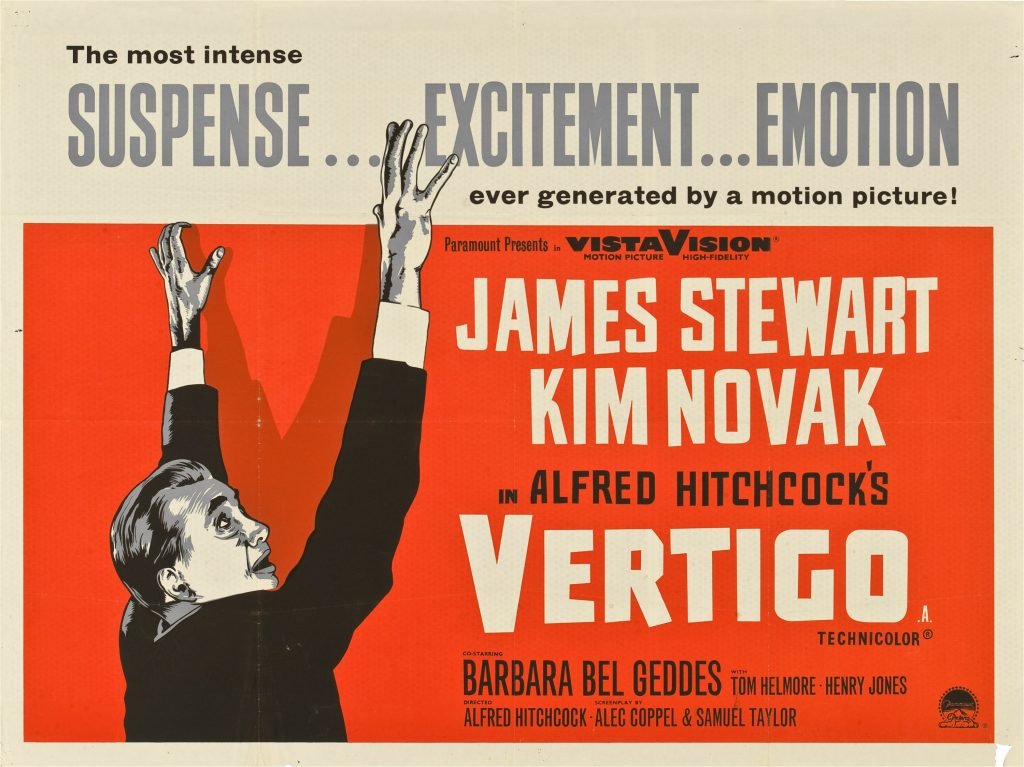
“A valuable work at least, is one which challenges codes, overthrows established ways of reading or looking, not simply to establish new ones, but to compel an unending dialogue…”
Peter Wollen
I was thinking about the relationship commerce and art have to filmmaking. All major films are made to make money, some more than others. If we think of big budget mindless action movies such as the Rambo films, they are designed to make money, selling a product that is popular with a certain demographic; macho, action-loving males (for the most part). True, there may be some political themes coursing through the subtext of such films, but artistically, in one’s humble opinion, their value is nought.
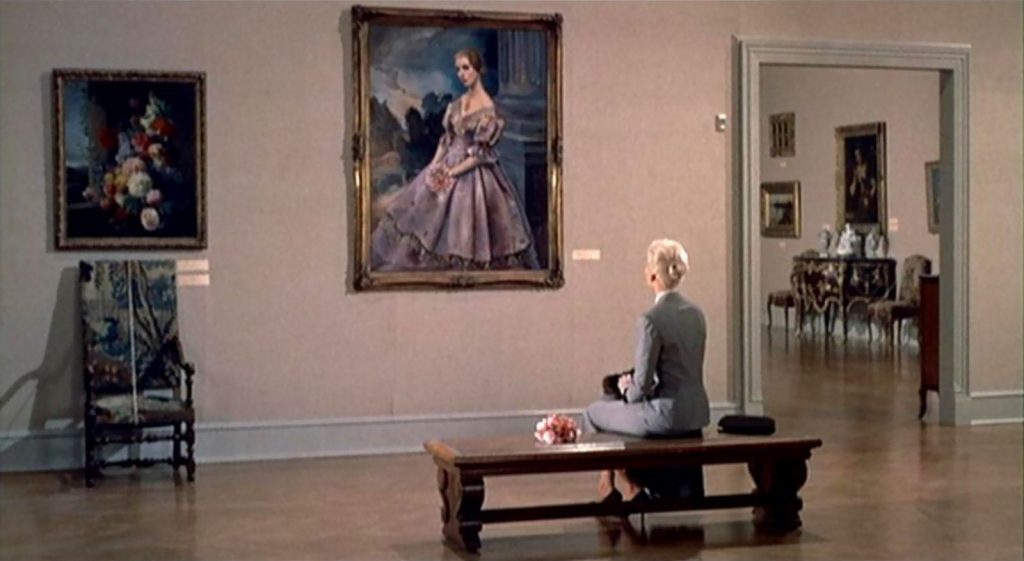
Hollywood has always been good at making and promoting these sort of films, by this I mean ‘money makers’. Not only action films but romantic comedies, gore movies and crime thrillers amongst others. Not all of these types of films are completely devoid of artistic merit, some films successfully bridge the gap between commercial success and artistic acclaim.
It works the other way too, some films are so ‘arty’ that they never enjoy mass distribution or reverence on the same scale as other less thought-provoking films. It seems Hollywood is keen on formula and safe plays, they like to regurgitate the same old ideas and are less keen on taking a chance on more original, less tried and tested material. Therefore we have to suffer endless sequels and franchises and more spiritually enriching films are like buried treasure that must be searched for and uncovered. A good art-influenced film can achieve cult status and therefore will enjoy a good reputation in the sub culture. It is my opinion that the best treasures can be found in this genre.
So, stumbling back on track, what makes a certain director an Auteur? This is a question that cannot easily be answered and in fact, seems to be based more on opinion and evidence than on fitting a certain criteria. After seeing Vertigo, could we consider the possibility that Alfred Hitchcock is an auteur? Do his films have their own unique fingerprint? Was he an innovator? Is he thematically and stylistically consistent? If so, in what ways? It seems the “unending dialogue” continues to grow and compound.
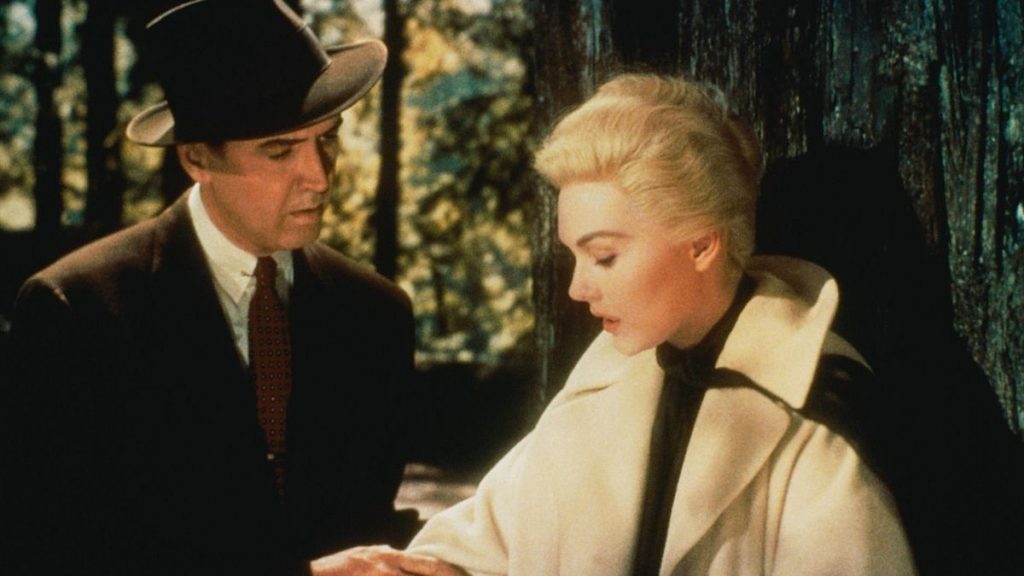
Auteur translated, means author. In the 1950’s there was a swell of European cinema rebels, who stamped their identity onto the world of film. Hollywood had dominated moving pictures up until the end of the Second World War and in light of the basic formulas and proven recipes, Hollywood had become so adept at manufacturing a ‘product’, a backlash was imminent. It is a natural progression; artistically minded people would want to use the medium in a more thought-provoking and challenging context. The difference between commercialism and individualism would now become much more pronounced. This new wave of european influence was far-reaching and intrinsic to the development of such future heavyweight directors as Orson Welles, Howard Hawkes, Fritz Lang and of course our very own Alfred Hitchcock.
These directors used this european influence to their own ends, to produce films that were different from those which audiences were used to seeing. The unexpected and the unusual were key to their difference from the normal Hollywood board of fair. Using new techniques to produce a certain atmosphere or convey a particular idea was key. ‘Camera-stylo’ and ‘mes-en-scene’ were all beginning to be employed to signify ideologies and atmosphere that made films such as Vertigo different from the accepted norm.
In this bizarre motion picture, we are introduced to a retired detective ( James Stewart) who suffers from vertigo, due to a horrific accident during a roof-top chase in the opening scene. After slipping off a steep tiled roof, Stewart ends up hanging by his fingertips from a gutter 100ft above the ground. The police officer with him, attempts to pull him to safety but in doing so, loses his balance and falls to his death. Quite an intense opener. Suffice to say, Stewart’s character (known as both Johnny and Scotty in the film) is scarred by the experience and has his heart set on retiring from such a perilous occupation and overcoming his restrictive fear of heights.
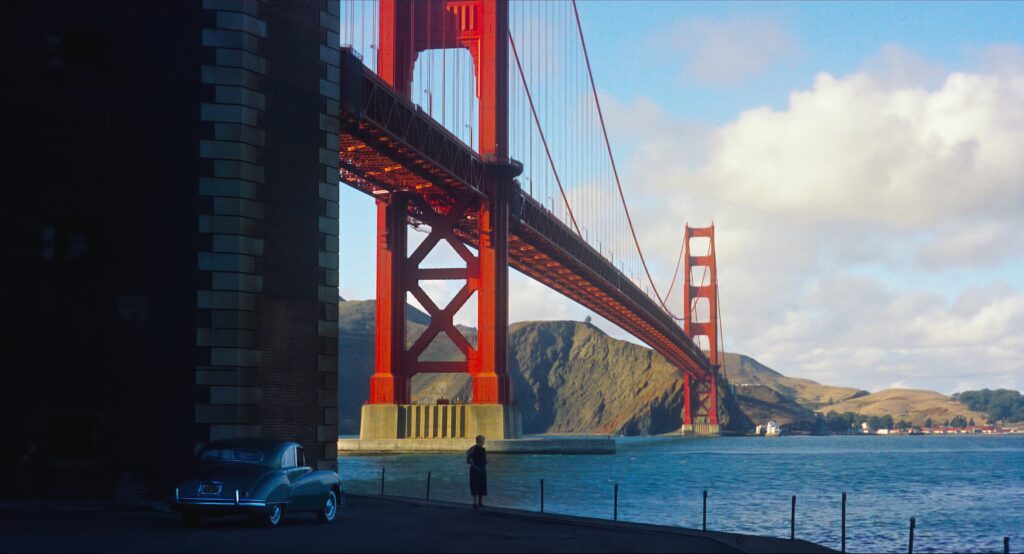
Best laid plans often go awry. An old friend gets in touch with Scotty and asks him to follow his wife as she has been acting very strangely and is suspected of losing her mind and is possibly suicidal. Kim Novak plays Madeline, a beautiful and enchanting woman who appears to spend her days wandering about in a cemetery and sitting for hours in front of one particular painting in an art gallery. She appears obsessed with a distant relative who died by suicide. As Scotty follows her and observes her movements, the plot thickens as does the fog of confusion. We start to wonder what the hell is going on. Indeed, the woman seems disturbed and her strange obsessions leave more unanswered questions than they provide answers.
This is Hitchcock purposely drawing us in and confusing the hell out of us for his own pleasure. We are tricked into taking things at face value and left trying to second guess where the narrative will take us next. Madeline then attempts suicide by throwing herself into San Fransisco bay, lucky for her Scotty has been closely observing her and is on hand to fulfil the role of prince charming, by diving in and rescuing her from drowning. At this point I’m beginning to think that James Stewart may have been the victim of type casting as last week I was watching him pull someone else out of a river in It’s A Wonderful Life (1946).
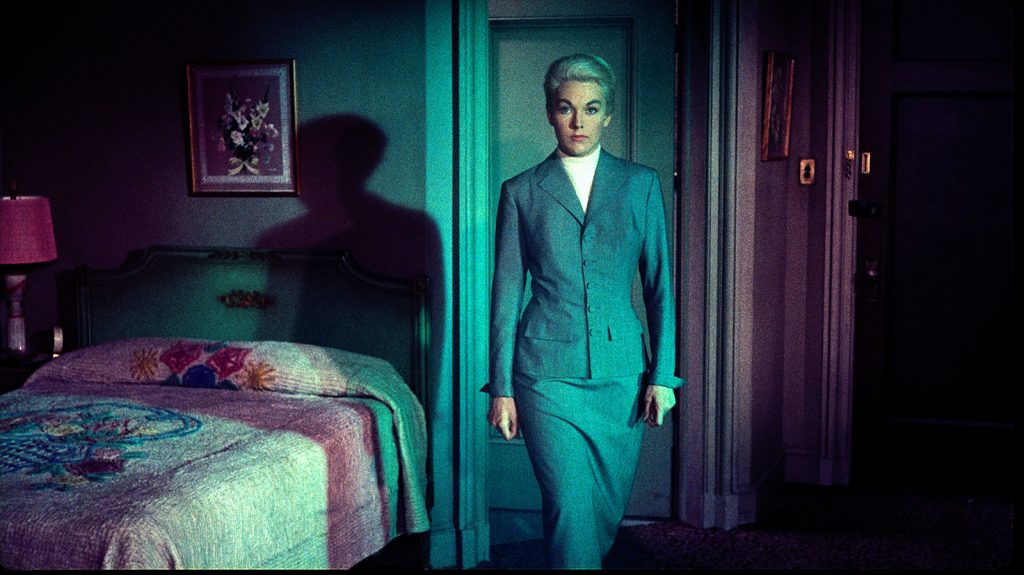
Anyway, after rescuing our damsel in depression, it becomes painfully obvious that Scotty has fallen for Madeline, in more ways than one! Now things really start to get interesting and bizarre. On top of the complication that his old college sweetheart (played by Barbara Bel Geddes) is a little jealous (painting herself into portraits that are synonymous with the picture that Madeline is obsessed with in the art gallery), there is also the fact that he is falling head over heels in love with his friend’s wife. By the mid-point in the picture, there are already enough lofty suppositions to give anyone vertigo.
The film’s plot climbs higher into the consciousness as it progresses, soon we are completely shocked by the revelation that poor Scotty is the victim of a nefarious plot. After chasing after Madeline and following her up to a bell tower, Scotty’s acrophobia debilitates him, he freezes and cannot let go of the banister. Knowing that she is suicidal, he is in anguish as he is powerless to stop her. He then sees her fall past him through the window. What he doesn’t see at the top in the belfry, is the friend that hired him, pushing Madeline over the edge. Another thing he does not see is the fact that there are two Madelines at the top. One is the woman he has been following (an imposter), and the other is the real Madeline. At this point the audience is made privy to this information and poor Scotty is left in the dark, in a weakened psychological state.
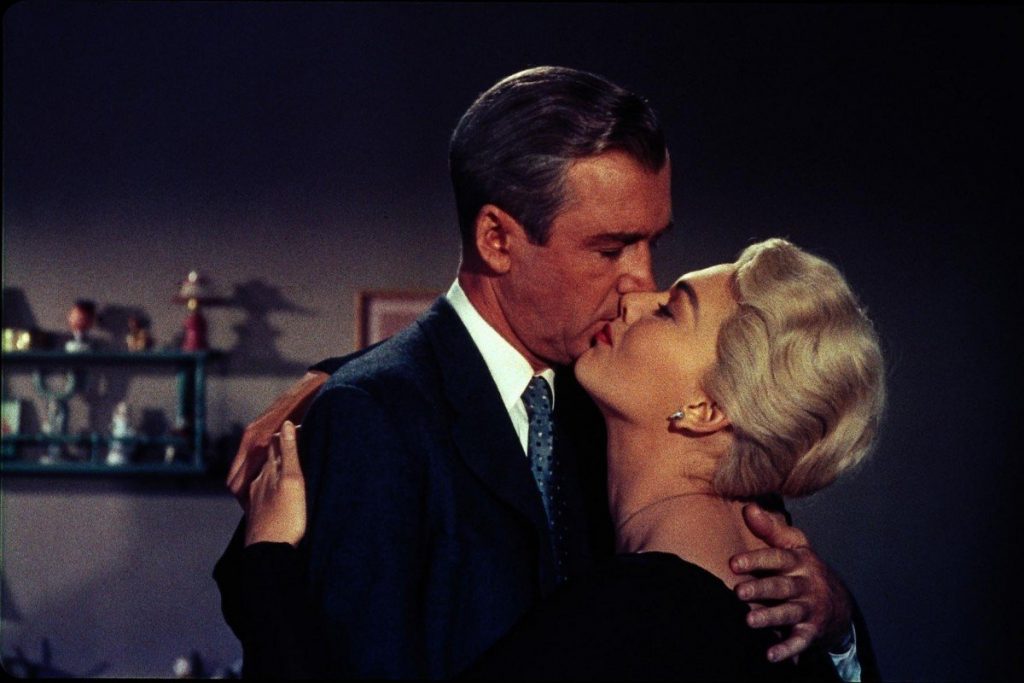
After an official investigation into the incident, Scotty is interned in a hospital to recuperate from the trauma induced. In the aftermath of this tragedy, he becomes obsessed with the memory of Madeline and sees her face, in the faces of others. He also suffers a nightmare which is a very notable scene. You can read my analysis of this particular scene here.
Hitchcock predates psychedelic imagery by treating us to a bizarre dream sequence wherein we witness animation combined with changes in hue, to create a disturbing insight into Scotty’s trauma. A scene like this is typical of Hitchcock’s innovative imagination and technique, strengthening the argument for the proposition, that he is indeed an auteur.
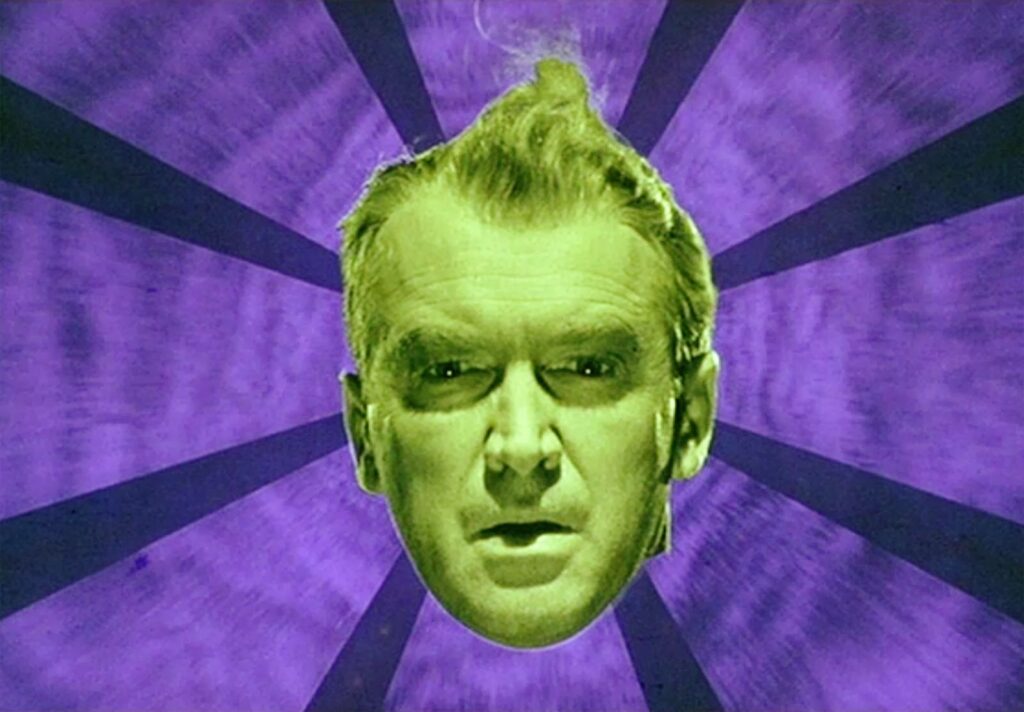
In the final section of the film things really begin to get weird. Scotty meets a woman called Judy who strongly resembles Madeline, although her hair is now dark as opposed to blonde. Little does he know that this woman is the same impostor that was playing the part of Madeline. Here though, Scotty is beginning to come apart at every seam, his obsession with Madeline, whom he had fallen deeply in love with, leads him to pursue Judy, and dress her up to make her resemble Madeline more closely, even to the point of dying her hair. We are reminded of the scene in Pretty Woman (1990) where Richard Gere takes Julia Roberts to the Beverly Hills clothes store to buy her some new outfits, only in Vertigo there is a much more sinister feeling represented in Scotty’s obsessive insistence upon detail. The character of Judy is also very ambiguous, she is involved in the clandestine murder plot, yet capitulating to Scotty’s infatuation, by indulging his every whim. Surely it can only end in tears?
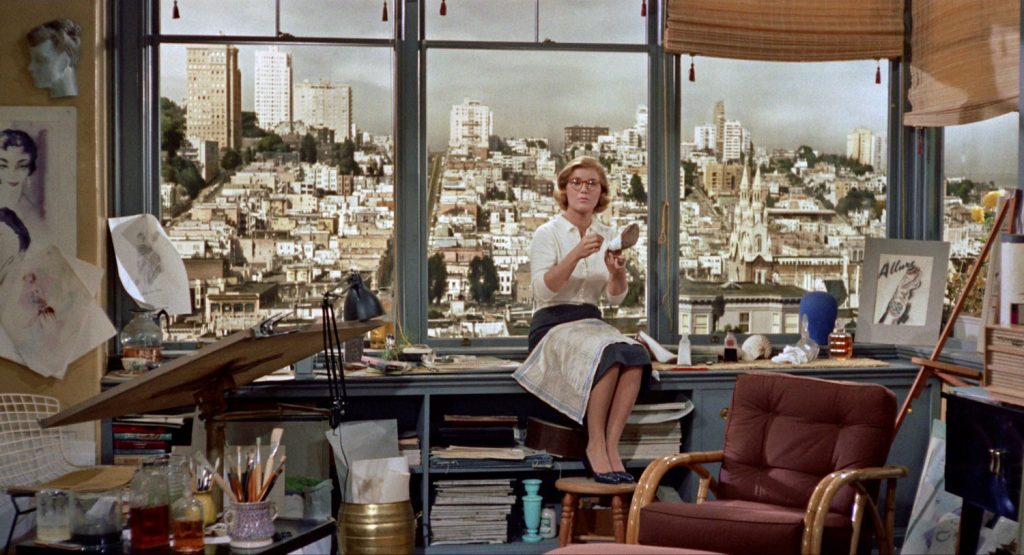
So, after walking out of the screening, I felt I was still “in the film”. I hadn’t let it go. There was no closure or ending to speak of, such was the atmosphere of Vertigo.
It followed me home in the blustery, dead-leaf dancing wind. Haunting my mind, leaving me searching for a question that I might never know the answer to. An auteur you say? I think it’s definitely possible and highly probable that Mr. Hitchcock is indeed a fine example of such an artiste. His creepy and edgy style, draw us in, dangling MacGuffins in front of us, teasing our minds to postulate wildly and then he hits us without mercy, shocking us with the unexpected. Never following a particular formula, Hitchcock maintains a style and feeling unique to himself.
Did you enjoy this article about Vertigo?
You can read more of our articles here.
Please join us on social media on Facebook, Instagram, Tik Tok and Twitter. We really appreciate all the likes, shares, retweets etc., and we would love to hear from you and continue the wonderful celebration of all things cinema on these platforms.
If you love to watch videos on YouTube, then please subscribe to our channel here. There’s lots of fun and informative videos uploaded that we hope you will enjoy!
We have a passion for movies and aim to produce entertaining and informative movie-related content. It certainly is a lot of hard work, but we love films so much that it’s worth all the effort. We have to keep the lights on and make sure we have plenty of caffeine to keep all of the articles, videos and social media posts coming, so if you like our work, then please consider supporting us at Buy Me A Coffee here. You can also become a More Movies patron on Patreon here.
To help support us here at More Movies, we do use advertising in a few places, so we appreciate it if you do not use AdBlockers on our site, as this helps keep a few pennies trickling in. We also utilise affiliate links throughout the site, usually to help guide our readers to places to stream, rent or buy the movies we talk about. One of the biggest sources for movies online is Amazon Prime Video, where you can stream over 18,000 films. If you are interested in Prime and haven’t signed up yet, you can get a 30-day free trial via this affiliate link, which helps support us too.

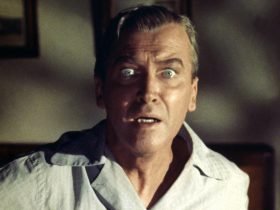
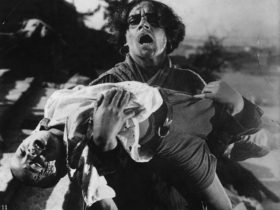





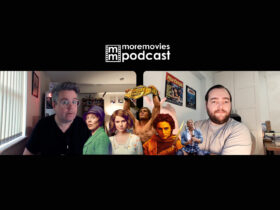


Good article. I particularly liked the bit about hollywood’s inclination towards “tried and tested” cinematic & narrative techniques.